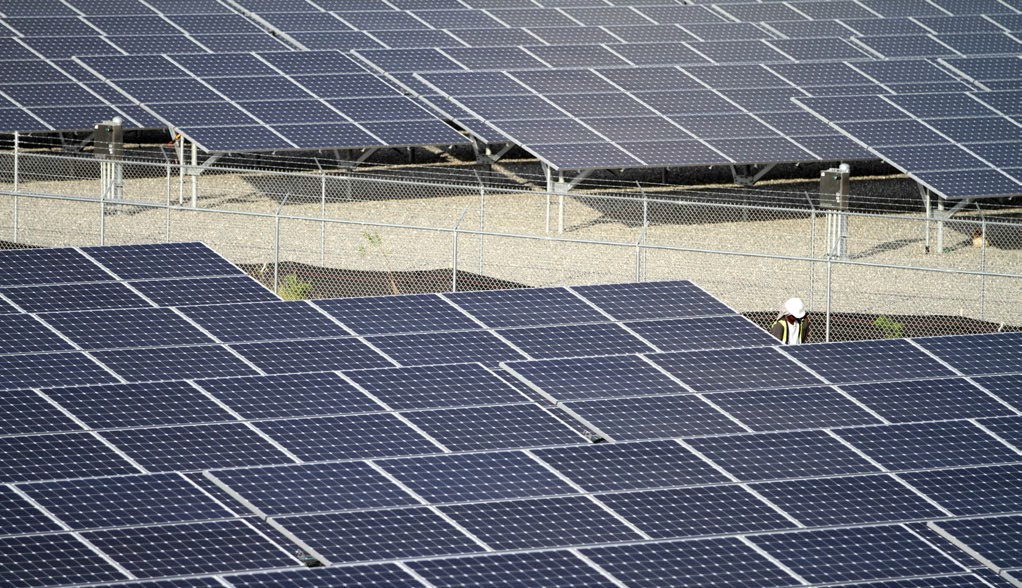Guest Columns
Useless Residential Solar Electricity
Residential solar installations waste money, fool homeowners with false promises of economy, and will not spare significant carbon emissions.

Residential solar installations are a small-scale, photovoltaic systems, usually installed on the homeowner’s roof. Compared to utility scale solar, residential solar is much more expensive per kilowatt hour of electricity produced. The roof may face in a poor direction or have inappropriate tilt. The installation cost is high due to the small size of the job and the custom design work for each location.
Residential solar costs more than the homeowner typically sees
Utility scale solar is evaluated by comparing it to fossil fuel generation, the alternative available to an electric utility. But residential solar is evaluated by comparing it to buying retail electricity from the electric utility. In most jurisdictions the homeowner can also sell excess electricity back to the utility.
Three points of view are relevant, of the homeowner, of the utility company, and of society. The homeowner is usually pleased because in most cases he thinks he pays less for electricity. This is not because solar energy is cheap, but because the rest of world is subsidizing him. He may not realize the true cost of the solar electricity. The utility doesn’t like residential solar because it makes the utility lose money and lose control of the grid subjected to uncontrollable input from thousands of residential solar installations. From the viewpoint of the larger society, it is a waste of resources that accomplishes nothing for the economy while making the public incorrectly think solar is a bargain.
We have no argument with residential solar that is not connected to an electric utility. That is off grid solar, a method of supplying electricity to remotely located houses lacking the possibility of connecting to an electric grid.
Behind the connection to an electric utility is a vast investment in generating stations and electric transmission lines. Besides the capital investment in this infrastructure, money is expended for generation of electricity, often by purchase of coal and natural gas.
Retail rates reflect the transmission and distribution system
The cost to generate an extra kilowatt hour of electricity is only about 2 cents worth of natural gas or coal. But the retail customer is charged varying rates from under ten cents per kilowatt hour to over 50 cents in California. The reason electricity costs so much more at retail compared to wholesale is the cost of the capital investment. The utility must have infrastructure sufficient to handle the hottest day in July. The rest of the time the equipment is underutilized.
When the utility charges a homeowner 15 cents for a kilowatt hour of electricity the implicit bargain is that 2 cents is for the electricity and 13 cents is for the infrastructure that supplies the homeowner’s maximum demand on the hot day in July. Residential solar is a scheme for breaking that bargain — cheating. If a kilowatt hour of solar is substituted for a kilowatt hour of utility electricity, the utility saves 2 cents because it has to generate less electricity, but the utility loses 13 cents that would pay for the homeowner’s share of the infrastructure. The homeowner becomes a free rider that utilizes the infrastructure, but no longer pays his fair share of the cost.
The Net Metering Fiction
Net metering means that when the homeowner’s system generates more power than needed locally it can send kilowatt hours of electricity to the utility and then retrieve those kilowatt hours for free later. This is usually implemented by a bidirectional meter that runs backward when feeding electricity into the grid. When the meter runs backwards it is crediting the homeowner with kilowatt hours of electricity at the retail rate. Sometimes this is referred to as banking electricity. There is no bank. The electricity sent to the utility is immediately consumed by other customers. Usually there is an annual true-up that limits the amount of electricity credits that can be accrued. In many jurisdictions the homeowner can get additional credit for excess electricity that the homeowner can’t use.
Without net metering residential solar would be limited because maximum generation is at midday, but maximum consumption is in the late afternoon or early evening.
The Cost of Residential Solar
A $40,000 installation will have maximum generation of about ten kilowatts, or about 40 kilowatt hours per day. This varies depending on geographic location, the orientation of the array, and the season of the year. The true cost of the electricity depends on the interest rate, system lifetime and the cost of continuing maintenance. In a sunny area a good estimate is 30 cents per kilowatt hour. This is about 2-1/2 times more than utility scale solar costs to generate and 15 times more than using natural gas. Federal tax credits, a subsidy, will reduce this to about 20 cents per kilowatt hour. The cost per kilowatt hour is computed by amortizing the cost of the system over the life of the system using a proper discount rate for the value of money. In this case a 20-year lifetime and an 8% discount rate. The value of the system after 20 years is taken as zero. (Excel PMT function).
This system is large enough with net metering to zero out about 1,200 kilowatt hours per month. In some jurisdictions the cost of electricity is more than 20 cents per kilowatt hour and the system would be profitable. But a more typical cost of utility electricity is 15 cents per kilowatt hour. At that price the homeowner would be losing the difference of 20 cents minus 15 cents or five cents per kilowatt hour.
Breakeven times are in fact longer than quoted
But even if the homeowner is losing five cents per kilowatt hour he may be tricked into thinking that the system will pay for itself due to the use of the metric breakeven time, also called the payback period. If his electric bill is zeroed, the homeowner is saving 15 cents per kilowatt hour or $2,160 per year. The breakeven time is the $40,000 cost, divided by the annual savings of $2,160. This breakeven time is 18.5 years. The homeowner thinks, I’ll get all my money back in 18.5 years.
No, as any accountant would tell him, breakeven time computed in this fashion neglects the time value of money. His investment will never be paid back. He will lose $60 every month because his solar electricity costs five cents more per kilowatt hour than utility electricity and he consumes 1,200 kilowatt hours. Yet, the solar contractor, anxious to make the sale, is sure to quote the breakeven time. That is just another example of the fake claims that surround every aspect of residential solar power.
The Chinese and Indians will emit more than the carbon this saves
The premise behind solar power is that it does not generate CO2 and thus helps alleviate the supposed climate crisis. Solar power is an incredibly expensive method of reducing CO2 emissions. In order to eliminate the emission of a metric ton of CO2 one must generate about 3500 kilowatt hours of electricity by solar rather than natural gas, the typical fuel used by utilities. The utility charging 15 cents per kilowatt hour loses 13 cents for each kilowatt hour produced by residential solar. The other 2 cents is the cost of generating the kilowatt hour by the utility using natural gas. That 13 cents is a subsidy for residential solar.
The subsidy required to eliminate one ton of CO2 is $455, the subsidy for 3,500 kilowatt hours. This is not even counting the homeowner’s tax credit. But one can purchase a carbon offset, that reduces the same amount of CO2 emissions, for about $10 per ton.
There is little point in reducing CO2 emissions because the Chinese and Indians are rapidly increasing emissions by building coal generating plants. The effect of U.S. solar power on reducing emissions is negligible compared to rapidly increasing world emissions.
It is not only climate deniers or people paid by the fossil fuel industry that are skeptical of renewable power, including solar. The scientist James Hansen, the most important evangelist for climate change, denounced renewable energy as “grotesque” and “fantastical” in a Boston Globe op-ed. Hansen sees nuclear power as the only solution.
Please kill the residential solar industry
It’s difficult for politicians, or anyone, to admit they’ve been conned. It’s time that everyone admits it and we kill the residential solar power industry. Unfortunately there are thousands of homeowners that will fight to preserve the industry and its subsidies.
This article was originally published by RealClearEnergy and made available via RealClearWire.
Norman Rogers is a retired entrepreneur. He has written many articles on climate and energy as well as the Amazon book Dumb Energy.
-

 Civilization4 days ago
Civilization4 days agoTrump’s Venezuela Gamble and America’s Shifting National Security Strategy
-

 Civilization4 days ago
Civilization4 days agoOperation Absolute Resolve: Anatomy of a Modern Decapitation Strike
-

 Civilization4 days ago
Civilization4 days agoTen Reasons To Cheer the Arrest of Maduro
-

 Civilization2 days ago
Civilization2 days agoOne Fell Swoop: Lawsuit Eyes Death Blow to Racial Preferences
-

 Civilization19 hours ago
Civilization19 hours agoTrump’s New Doctrine of Precision Deterrence
-

 Executive2 days ago
Executive2 days agoWaste of the Day: $1.6T in Wasteful Spending in Rand Paul’s “Festivus” Report
-

 Civilization4 days ago
Civilization4 days agoTrump’s New Executive Order on Space Has the Right Stuff
-

 Guest Columns3 days ago
Guest Columns3 days agoAdvice to Democrats Regarding Maduro Arrest: Resist Reflexive Opposition













